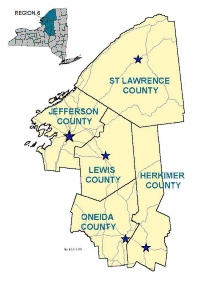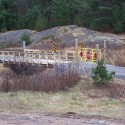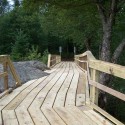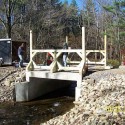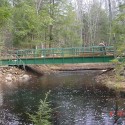DEC Warns of Poor Ice Conditions on Adirondack Waters
Recent heavy snows combined with earlier thaws have brought about inconsistent ice conditions on the surfaces of lakes, ponds and other waters in the Adirondacks and surrounding areas, the New York State Department of Environmental Conservation (DEC) warns snowmobilers, ice anglers, skiers, snowshoers and other recreationists today.
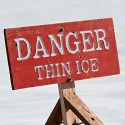 The weight of snow has caused ice to sink slightly forcing water from below the ice up on to the surface. Water, in some places up to a foot deep, may refreeze resulting in alternating layers of ice and water all covered by a blanket of snow. The snow acts as an insulator preventing the water from refreezing completely even in very cold temperatures.
The weight of snow has caused ice to sink slightly forcing water from below the ice up on to the surface. Water, in some places up to a foot deep, may refreeze resulting in alternating layers of ice and water all covered by a blanket of snow. The snow acts as an insulator preventing the water from refreezing completely even in very cold temperatures.
DEC has received numerous reports of snowmobiles and other vehicles getting stuck in the mixture of snow, slush, ice and water. Several snowmobiles and vehicles have broken through areas of thin ice.
These conditions also are dangerous to non-motorized recreationist who may have a much harder time traveling across the surface of waters becoming tired, wet and vulnerable to hypothermia.
Snow cover also prevents all recreationists from seeing areas of thin ice, putting them at risk of breaking through to the cold waters underneath.
DEC advises the public to be cautious and heed the following advice:
- Ice will not be the same thickness on waters in the same area or even on the same body of water. Check the depth of the ice before crossing, in areas you plan to fish and at several points along the way as you traverse a water body.
- Be particularly cautious around inlets, outlets, near ice prevention devices (bubblers), shoreline seeps and over moving water.
- Remember, ice that holds snow may not hold the weight of a person.
DEC also advises the public to be prepared in case you or a companion falls through the ice:
- Carry ice picks to pull yourself out of the water.
- Carry a 50 foot rope to pull others out of the water.
- Remember Reach-Throw-Go.
- Reach – Rescuers should lie on their belly, staying away from the edge of the broken ice, and reach with a tree branch, hiking stick or ski pole. Pull the person up onto the ice and both of you should roll away or crawl on your belly for several feet, then crawl on all fours until you are certain you’re out of danger. Retrace your footsteps back to land.
- Throw – Staying some distance away, throw a rope to the person, pull the person across the ice until you are certain they are out of danger.
- Go – If you do not have the means to safely rescue the person, go for help immediately.
A person that falls through the ice typically has two to five minutes to get out before the cold saps their strength and concentration. Once out move quickly to shore following your tracks onto the ice. Get warm and dry as soon as possible. If a car or building is not close by you may have to build a fire. Always carry fire-making supplies in a waterproof bag in a fanny pack or in a pocket.
Being prepared and using caution is important when recreating on frozen waters.

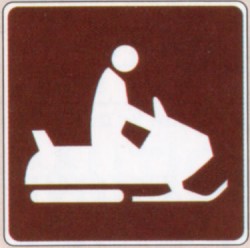 Gates on snowmobile trails on Adirondack Forest Preserve lands in Franklin County are now open, New York State Department of Environmental Conservation (DEC) Regional Director Betsy Lowe announced today.
Gates on snowmobile trails on Adirondack Forest Preserve lands in Franklin County are now open, New York State Department of Environmental Conservation (DEC) Regional Director Betsy Lowe announced today.